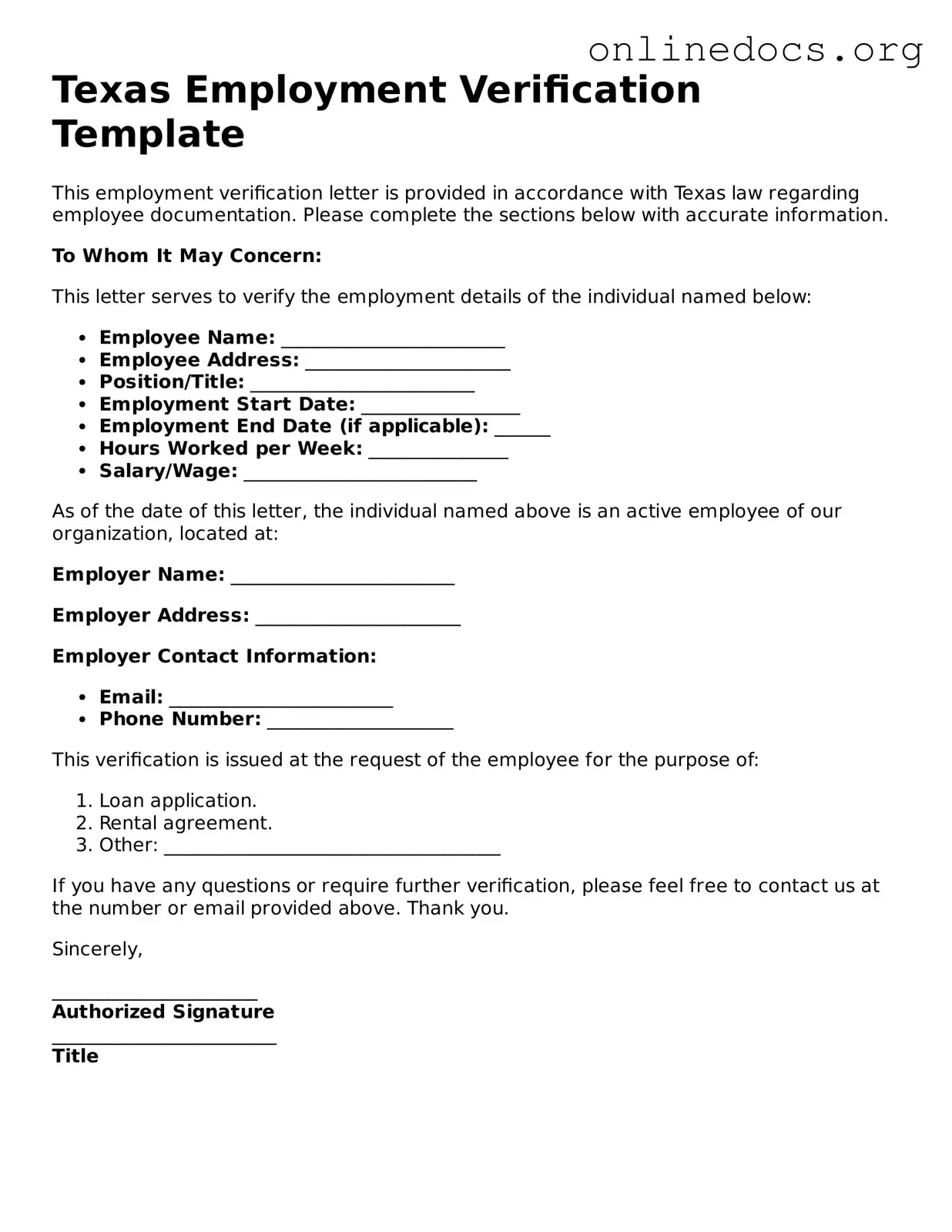The I-9 form, officially known as the Employment Eligibility Verification form, is used by employers in the United States to verify an employee's identity and authorization to work. Like the Texas Employment Verification form, the I-9 requires employees to present specific documents that prove both their identity and their legal right to work in the country. Both forms are essential for compliance with federal regulations and help ensure that employers are hiring individuals who are legally eligible to work.
The W-4 form, or Employee's Withholding Certificate, is another document that shares similarities with the Texas Employment Verification form. While the W-4 focuses on tax withholding, it also requires employees to provide personal information that confirms their identity. Both forms play a critical role in the employment process, ensuring that employers have accurate information for tax purposes and compliance with employment laws.
The Form 1099 is used for reporting income received by independent contractors and freelancers. While it differs in purpose from the Texas Employment Verification form, both documents require accurate identification details to ensure proper reporting. Employers must verify the identity of contractors before issuing a 1099, similar to how they verify the identity of employees using the Texas Employment Verification form.
The Social Security Administration’s Form SS-5, Application for a Social Security Card, is another document that parallels the Texas Employment Verification form. Both forms require personal information and proof of identity. While the SS-5 is specifically for obtaining a Social Security number, it is essential for employment verification, as a valid Social Security number is often required for the Texas Employment Verification process.
The Texas Workforce Commission’s Employer's Quarterly Report is a document that shares a connection with the Texas Employment Verification form in terms of employment tracking. While the quarterly report focuses on wages and employment statistics, it relies on the accuracy of employee information, much like the employment verification form. Both documents help ensure that employers comply with state regulations regarding employment and taxation.
To ensure your wishes are honored regarding the distribution of your assets, consider utilizing a comprehensive Last Will and Testament resource that can guide you through the process. You can access the form by visiting our Last Will and Testament template.
The Form I-797, Notice of Action, is used by the United States Citizenship and Immigration Services to communicate the approval of immigration petitions. This document can be relevant for employment verification, especially for individuals on work visas. Like the Texas Employment Verification form, the I-797 serves as a confirmation of eligibility to work in the U.S., ensuring that employers have the necessary documentation for their employees.
The Employee Identification Number (EIN) application, also known as Form SS-4, is essential for businesses to obtain a tax identification number. While the EIN application focuses on business identification, it requires accurate information about the business and its owners. This is similar to the Texas Employment Verification form, which ensures that employers have the correct details about their employees for tax and legal compliance.
Finally, the Form 8850, Pre-Screening Notice and Certification Request for the Work Opportunity Credit, is another document that relates to employment verification. This form is used to determine if an employee qualifies for certain tax credits based on their background. Both the Form 8850 and the Texas Employment Verification form require detailed employee information and serve to validate the eligibility of employees for specific programs or benefits.
